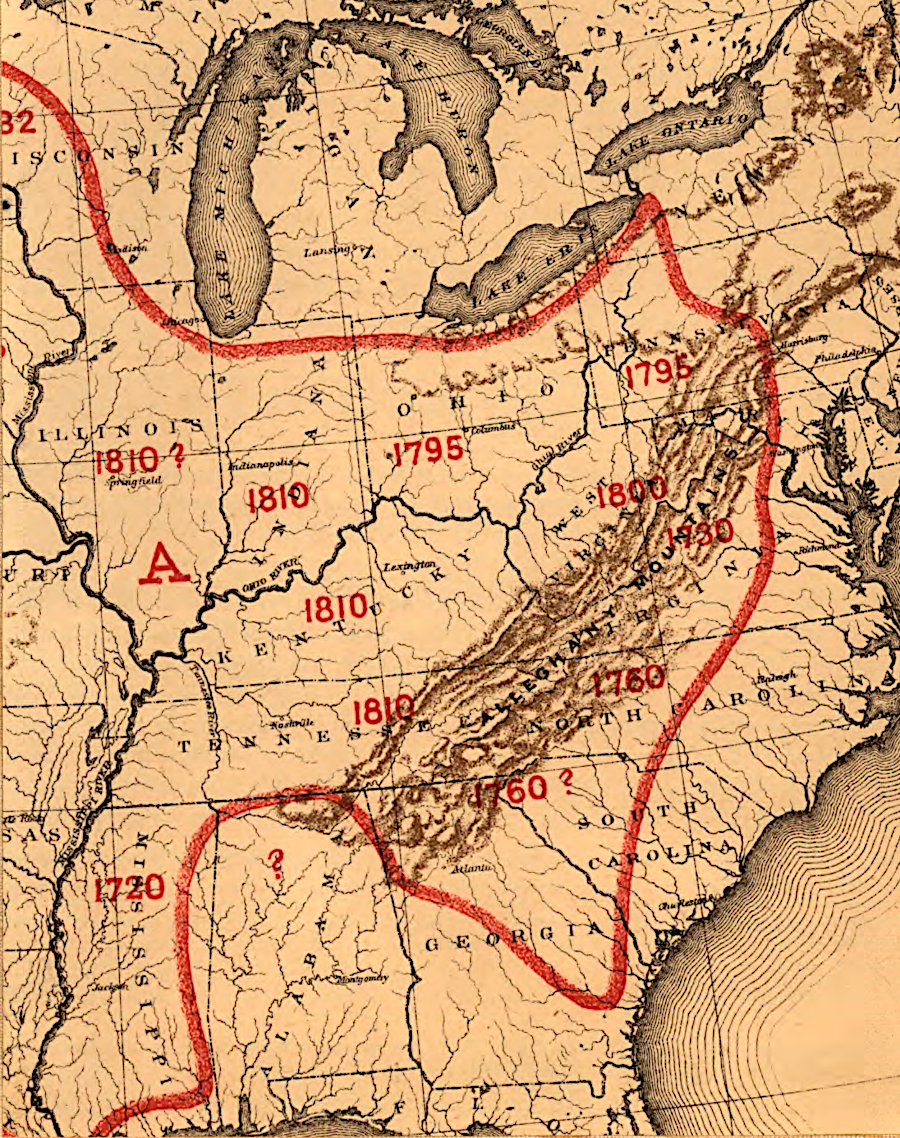
map showing the year in which bison were extirpated from eastern states
Source: Library of Congress, Map illustrating the extermination of the American bison

map showing the year in which bison were extirpated from eastern states
Source: Library of Congress, Map illustrating the extermination of the American bison
Bison were native to Virginia. When Europeans first arrived, their range extended from Florida to New York and from Mexico to Alaska. There were perhaps 60 million bison, grazing primarily on grasslands and steppes. They would create "wallows," depressions in loose soil, so the dust would deter biting insects.
Bison who wander on the open range naturally live in bands arranged by sex, age, season, and habitat. A mature male may be dominant over 30 animals, and he may lose up to 200 pounds during breeding season as he maintains control over his cows. Though bison are gregarious animals, the older bulls which are no longer able to control cows for breeding end up living solitary lives.
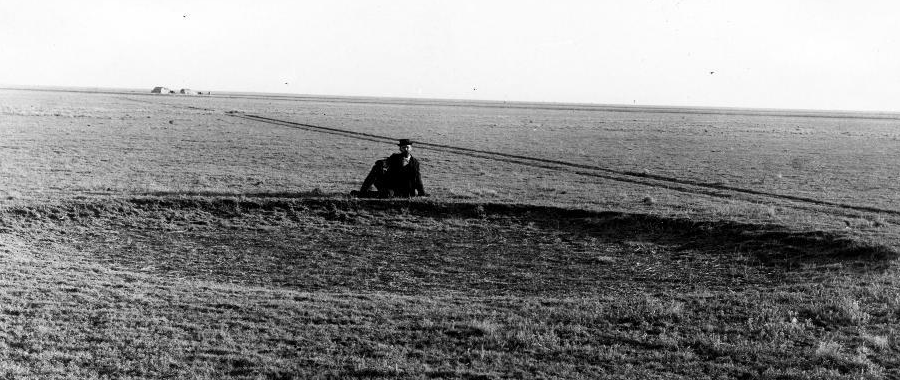
bison created "wallows" to generate dust that deterred biting insects
Source: US Geological Survey (USGS), Typical surface underlain by the Ogahalla formation of the high plains of western Kansas and buffalo wallow (Haskell County, Kansas, 1897)
The American species (Bison bison) is different from the European bison (Bison bonasus), which still survive from Germany to Belarus. Though the American bison is typically called a "buffalo," technically bison and buffalo are different species. Bison have long, shaggy beards and a distinctive hump at their shoulder. Though bison are the largest terrestrial animals in North America, they are smaller than the water buffalo (Bubalus arnee) that live between India and Cambodia and the African buffalo (Syncerus caffer) living south of the Sahara Desert.
The North American bison was almost exterminated in the 1800's due to over-hunting. Roughly 50 million bison were killed, in part to eliminate the natural food source for Native American tribes on the Great Plains and force them to settle on reservations set aside by the Federal government.
In 1889 the Superintendent of the National Zoological Park in Washington DC, William Hornady, highlighted the concern that pure-blood bison would be lost irretrievably. He helped ensure the species did not go extinct.
Within the boundaries of Yellowstone National Park, just one wild herd of 23 animals survived in the early 1900's. Less than 1,000 bison remained in North America, creating a genetic bottleneck.
At what is now Wind Cave National Park in South Dakota, the remaining animals maintained more genetic diversity than other herds held in captivity, and those animals are used to help repopulate various herds across the Great Plains. Today, about 500,000 bison occupy just 1% of that range in fragmented herds.
Many bison today have a small percentage of cattle genes. Bison and wild cattle interbred ever since the Spanish brought cattle to Mexico in the 1500's, and bison were intentionally bred with cattle in the 1900's in efforts to expand the population.1
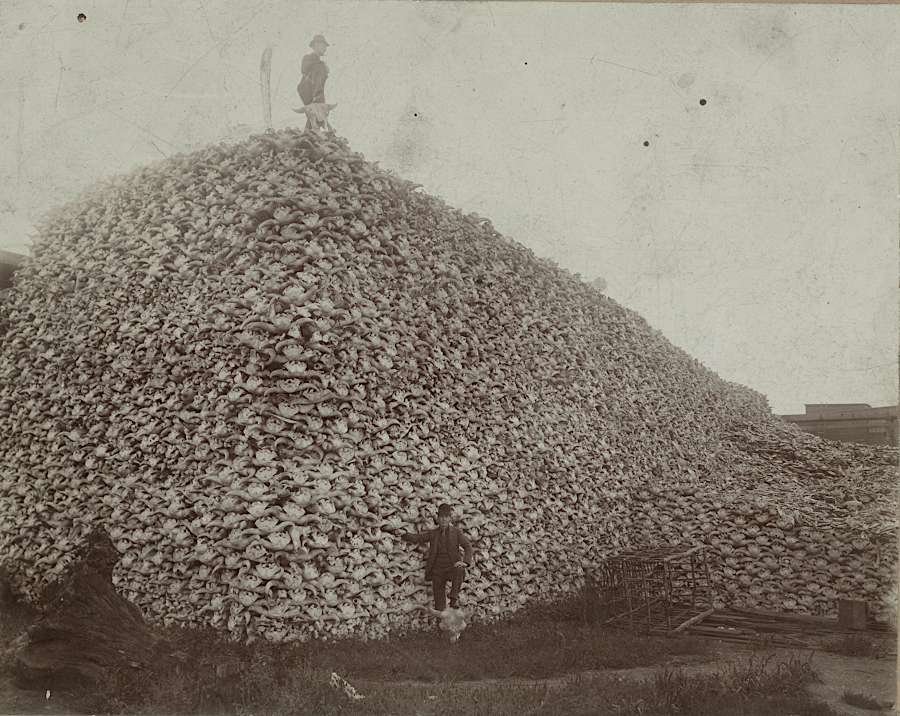
bison were killed in such large numbers that it was cost-effective to collect bones and process them into fertilizer and other products
Source: Detroit Public Library, Men standing with pile of buffalo skulls, Michigan Carbon Works (1892)
In Virginia, the "wood bison" grazed in small bands. It may have been a subspecies (Bison bison anthabascae), or just adapted to the eastern deciduous woodlands.
As the ice sheet retreated 8,000 years ago, bison expanded their range east of the Mississippi River and migrated from what is now Ohio and Kentucky into Virginia/West Virginia. The population increased significantly in the 1500's. By the time of European colonization, there were an estimated 2-4 million bison living east of the Mississippi River.
The population increase reflected the impact of expanding Native American agricultural practices, which created more open fields. The Hopewell culture also created ceremonial landscapes with a higher percentage of grasslands, facilitating bison expansion in the Ohio River watershed. Human-set fires established meadows and more habitat in the Alleghenies, Shenandoah Valley, and even the James River/Roanoke River/Potomac River valleys east of the Blue Ridge that was suitable for grazing animals.
Apparently the small population of Native Americans resulted in just light hunting pressure. That allowed the bison population to expand, in contrast to the pattern at the end of the Ice Age where hunting pressure led to the extinction of grazing mammoths.2

by 1632, French explorers in Canada knew the Ohio River Valley was full of "beuffles"
Source: John Carter Brown Library, Carte de la Nouvelle-France, augmentée depuis la derniere... (Samuel de Champlain, 1632)
Bison trails crisscrossed the Allegheny Mountains as the large animals moved between different salt licks and grass-rich valleys, and perhaps south in the winter. The Virginia bison may have migrated seasonally through Cumberland Gap, to move from the Powell River valleys to the bluegrass prairies in Kentucky. Compared to the herds on the Great Plains that Lewis and Clark saw on their journey in 1804-6, Virginia herds would have been smaller.
Bison were hunted by the Native Americans and the early colonial explorers. Dr. Thomas Walker recorded in his journal:3
Walker followed several "buffalo roads" in the mountains on his six-month expedition through what is now the southwestern corner of Virginia. He killed a total of 13 buffalo (along with 8 elk, 20 deer, and 53 bears); the explorers were never short of meat. On May 2, 1750, he recorded seeing a hundred buffalo on a tributary of the Powell River.
Previously on March 30:4
Bison were the largest land animal in Virginia after the Ice Age. In 1730, the Pennsylvania Gazette reported:5
William Byrd II feasted on bison when exploring his Land of Eden grant south of the Dan River. Buffalo skins were still being sold in Augusta County in 1749. In 1769, George Washington killed a bison near the Kanawha River in what is now West Virginia.
Bison concentrated where they could obtain minerals at "salt licks." After Dr. Thomas Walker crossed through Cumberland Gap into Kentucky in 1750, he reported seeing concentrations of buffalo where salty brine came to the surface and formed a salt lick:6
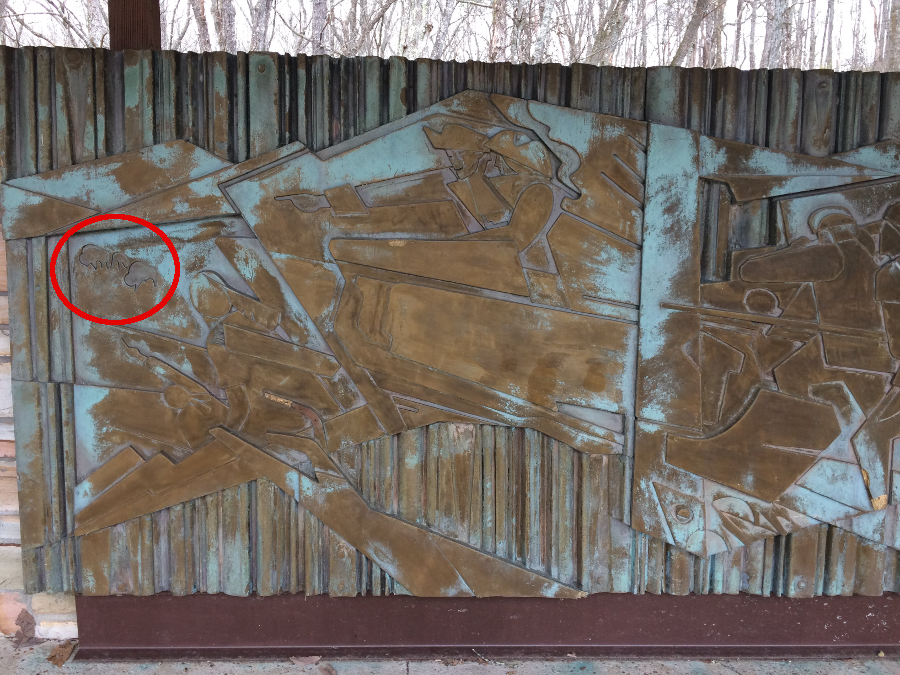
buffalo are included in the artwork at Cumberland Gap's Pinnacle overlook, commemorating colonial expansion through southwestern Virginia in the second half of the Eighteenth Century
A query of the Geographic Names Information System produces a list of 79 place names in Virginia with "buffalo," suggesting how common they were.7
Bison are raised in Virginia today primarily for the meat, though the hide and even the bones are sold as well. Farm-raised bison, like cattle, may be vaccinated to prevent the bacterial disease brucellosis.
Compared to beef, bison meat is low in cholesterol, fat and calories. Cardiac patients on a restricted diet can enjoy a big steak, so long as the meat is bison.
The Buffalo Hill Farm in Rockingham County once had the largest herd of buffalo east of the Mississippi River. It was started by a local resident who won a buffalo at a turkey shoot while travelling in the western United States. He bought more, primarily from the herd at Custer State Park in South Dakota, and once had nearly 200 bison before selling the ranch in 1979.
Travelers on I-81 would stop to look at the bison. James Madison University students returning to the campus recognized they were nearby when they spotted the bison again.
The billionaire president of Seagram's distillery, Edgar Bronfman Sr., once had the largest bison operation east of the Mississippi River. His farm staff raised bison at Georgetown Farm in Albemarle County and Buffalo Hill in Madison County. The meat was processed at a slaughterhouse in Madison County. It was sold at the Georgetown Farm Market in Charlottesville, and to Washington area restaurants and stores.
Buffalo meat was far more expensive than beef and by 2005, Bronfman closed down his bison operations. A Charlottesville newspaper later speculated that any remaining bison were sent to Bronfman's larger farm in Oklahoma:8
A couple who had worked for Bronfman opened an abattoir in Madison County in 1997. They still raise bison and operate the slaughterhouse there, as New Frontier Bison. Melrose Farm in Campbell County, Hollow Hill Buffalo Farm in Tazewell County, and Edmonds Farm in Lancaster County are among the Virginia farms that raise bison today.
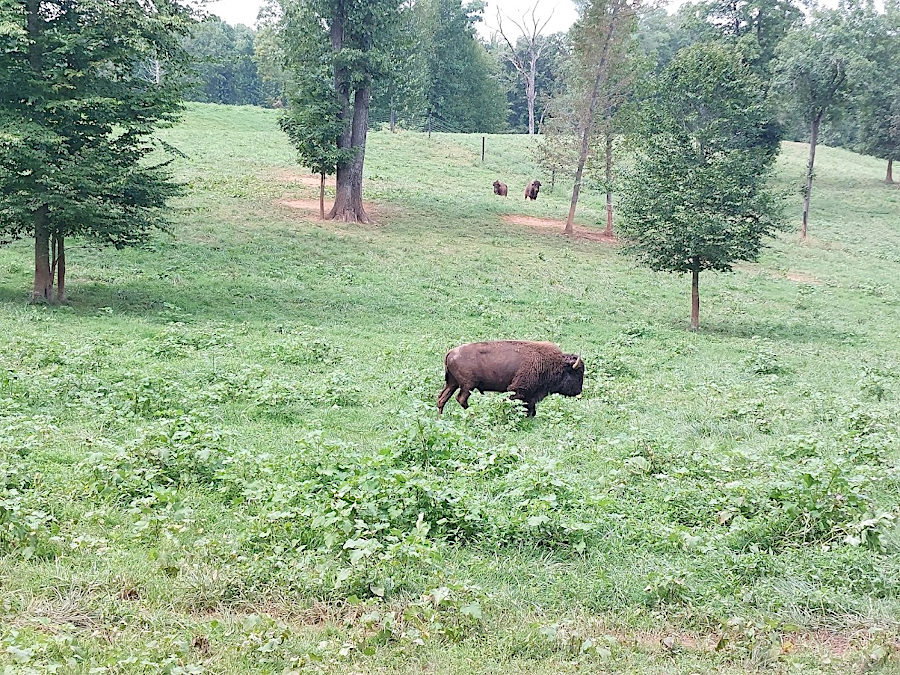
all bison in Virginia are now fenced in, no longer able to roam at will
Cibola Farm in Culpeper County has rebranded itself as the Virginia Bison Company, in order to help customers recognize their product. The meaning of "Cibola" was not recognized clearly:9
The Virginia Bison Company emphasizes the differences between raising cattle and bison:10
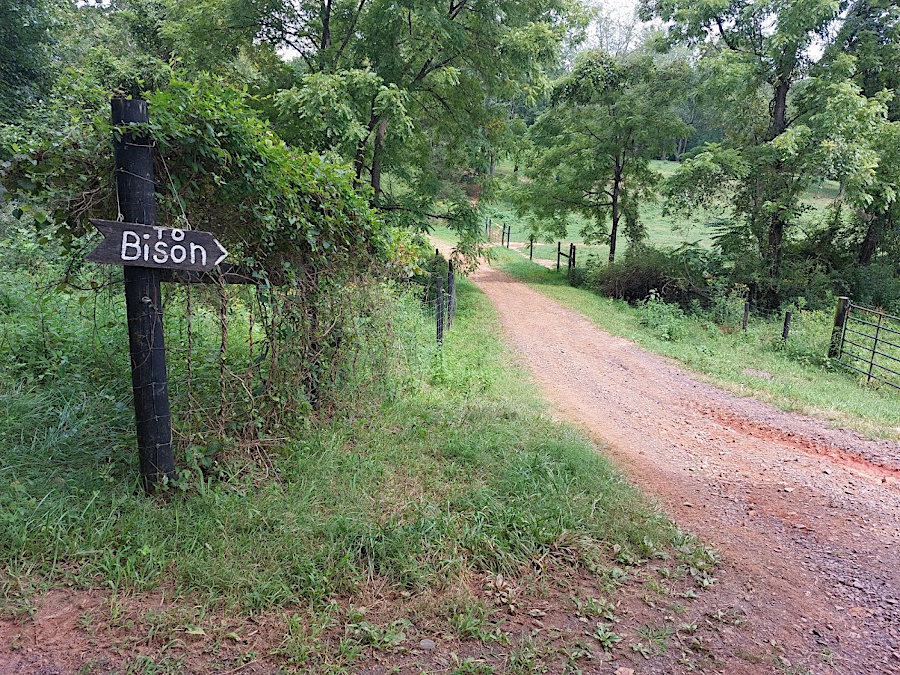
when Cibola Farm moves bison to different pastures, signs are moved as well so visitors can find them
In 2000, eight bison escaped from a farm's bison corral in Culpeper County. They were found individually by hunters over the next 3-4 years.
In 2018, a rusty chain on a gate broke and 134 bison left Cibola Farm to explore the woods, pastures, and even a vegetable garden along Stonehouse Mountain Road. All were herded back into the farm's pasture later that day. After recognizing the sound of an All Terrain Vehicle (ATV) which the bison associated with feeding, most willingly followed that vehicle back to the farm. That was the largest herd of free-roaming bison in Virginia for the last two centuries.11
Modern efforts to restore the grassland ecosystem in the Great Plains depend upon restoring the bison population at the same time. The wild prairie was shaped by 30-60 million grazing bison before the Wild West was tamed. Ecologists calculated in the 2008 Vermejo Statement:12
The buffalo was designated by the US Congress as the "official mammal" of the United States in the National Bison Legacy Act. It was signed on May 9, 2016. As noted by the National Park Service:13
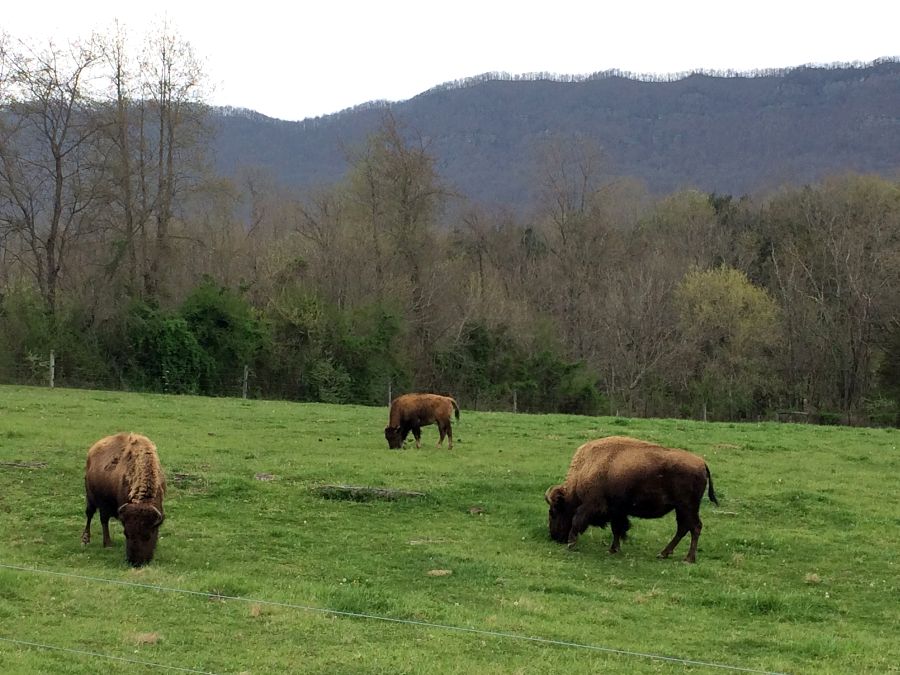
Wilderness Road State Park in Lee County maintains a herd of buffalo
Managing a natural herd of bison requires dealing with brucellosis, caused by the Brucella abortus bacterium. If domesticated cows are infected, they are likely to abort their calves. National Park Service officials have rejected proposals to inoculate the bison, after determining that approach would not be effective. One challenge is that elk in Yellowstone National Park are another reservoir of the bacterium, and it passes back and forth between the species.
In Montana, bison who leave the protection of Yellowstone National Park are managed by state officials. The state has authorized members of different Native American tribes to hunt and capture the wild bison to reduce the potential for disease transmission to livestock herds. Capturing bison has helped over 80 tribes establish 65 herds with a total of more than 20,000 bison.
The alternative management technique to hunting/capture, used in the past, was for the state to trap bison and sent them directly to slaughterhouses.
In the winter of 2022-23, heavy snow forced an unusually large percentage of bison to cross the park boundary. Over 1,000 of the 6,000 bison in the park herd were killed or captured, and opponents of the hunt called it an excessive slaughter.
The carcasses left by the hunters, after stripping the meat and hides, benefitted other wildlife in a fashion rarely seen since 30 million bison had roamed the Great Plains in large herds. One resident in the zone which was heavily hunted in 2023 said:14
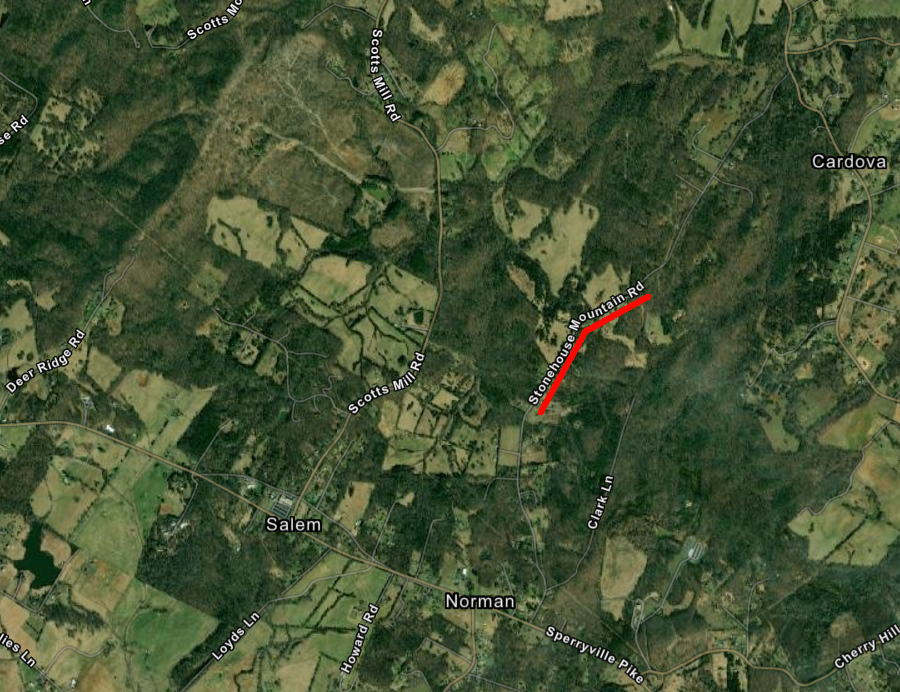
in 2018, bison escaped Cibola Farm and wandered for a day along Stonehouse Mountain Road in Culpeper County
Source: ESRI, ArcGIS Online
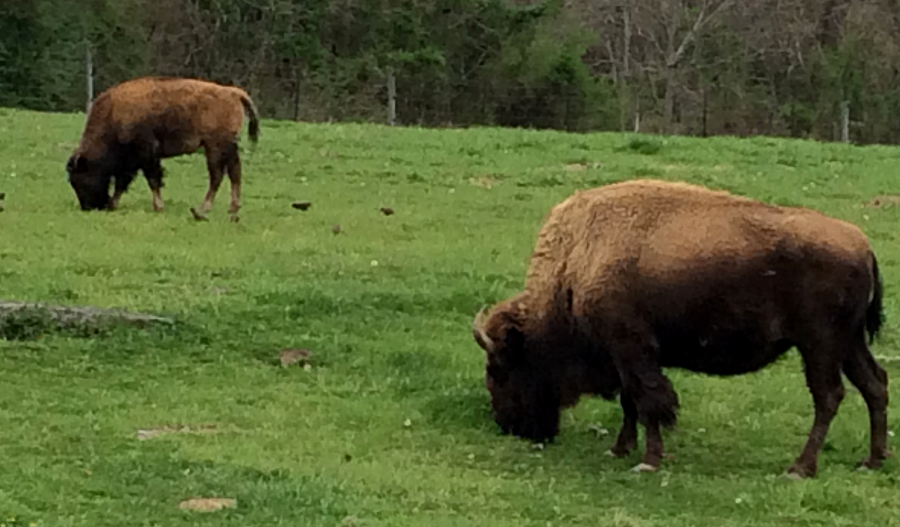
Native Americans, and then later immigrants such as Daniel Boone, hunted buffalo in the backcountry of Virginia
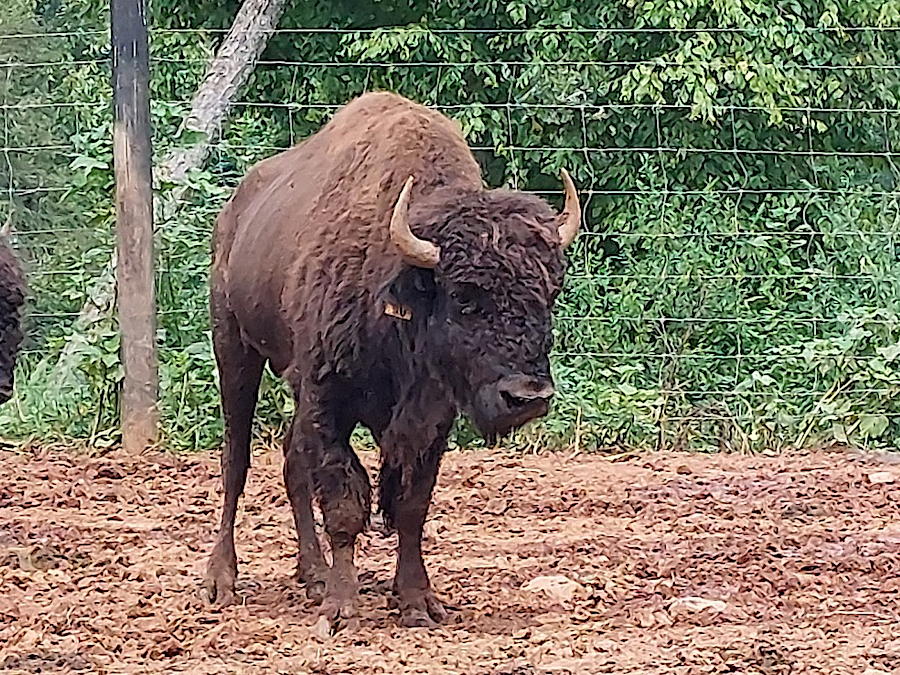
bison at Cibola Farms have ear tags
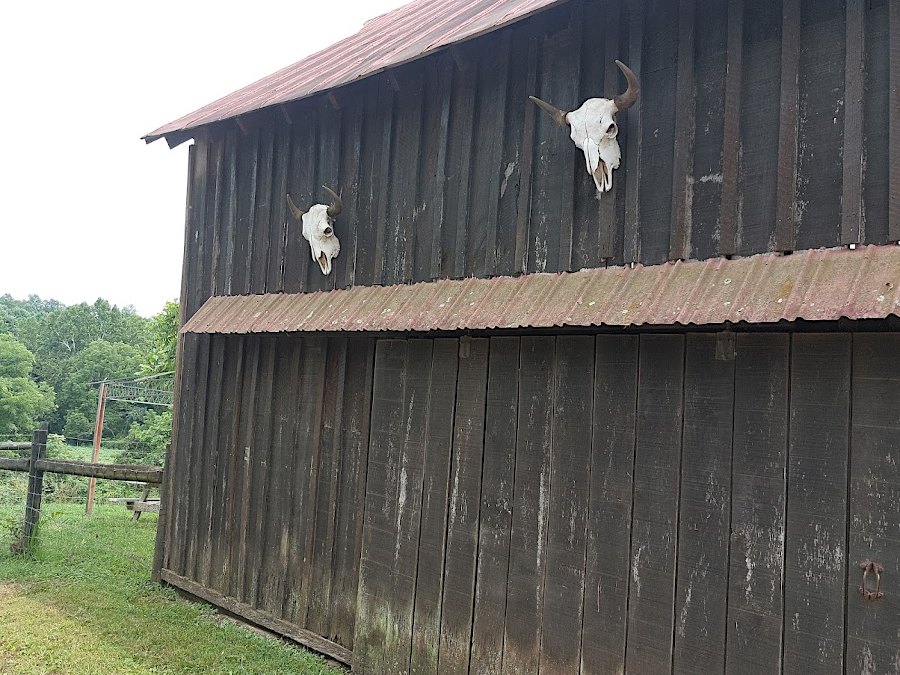
a barn at Cibola Farms displays bison skulls